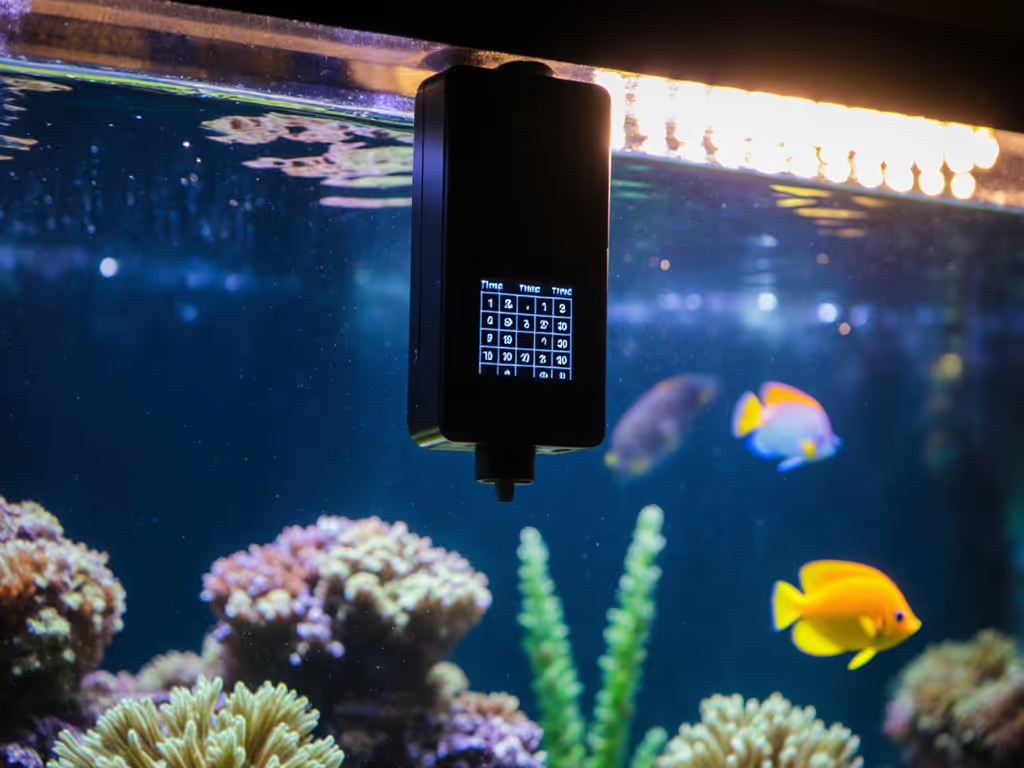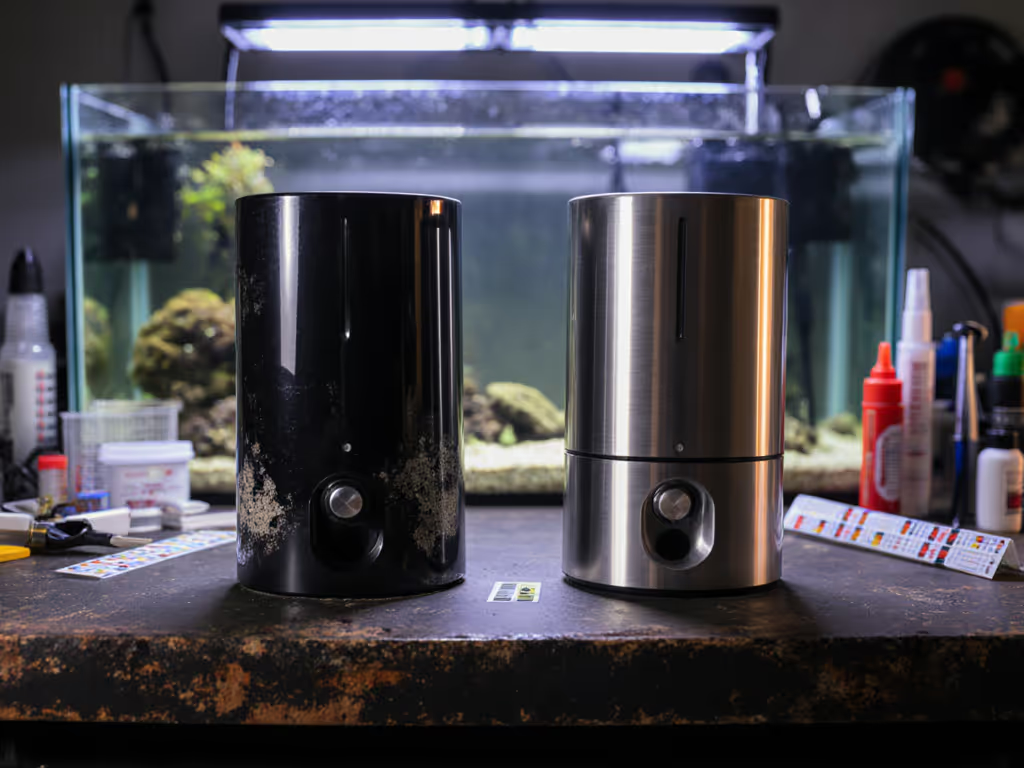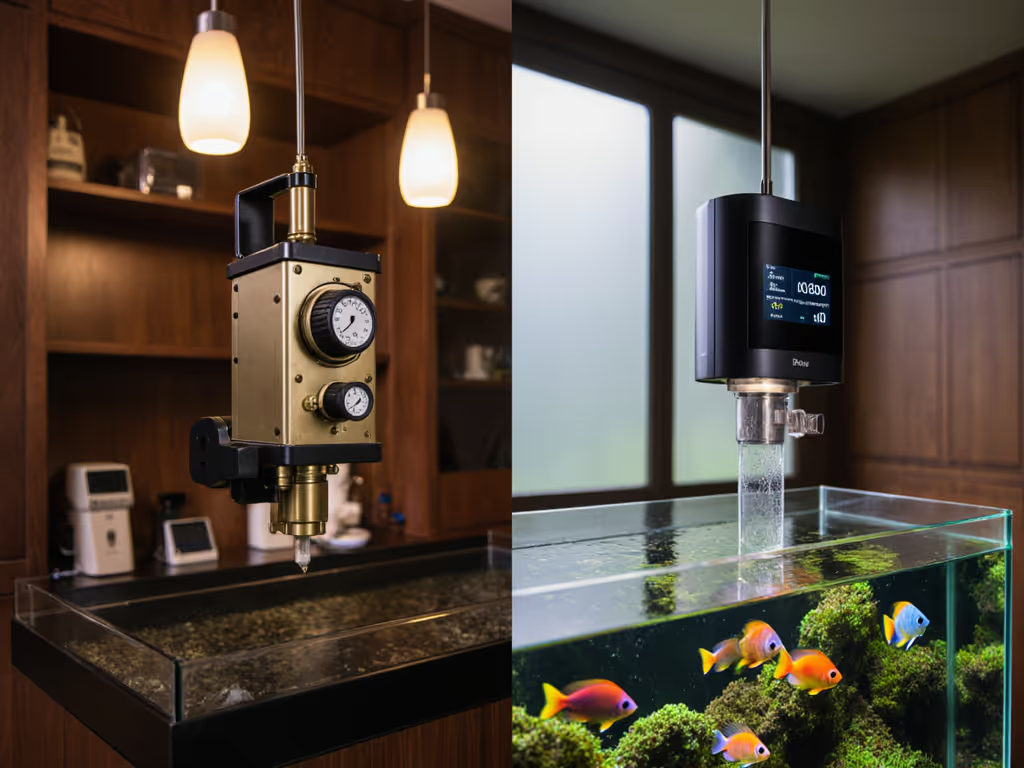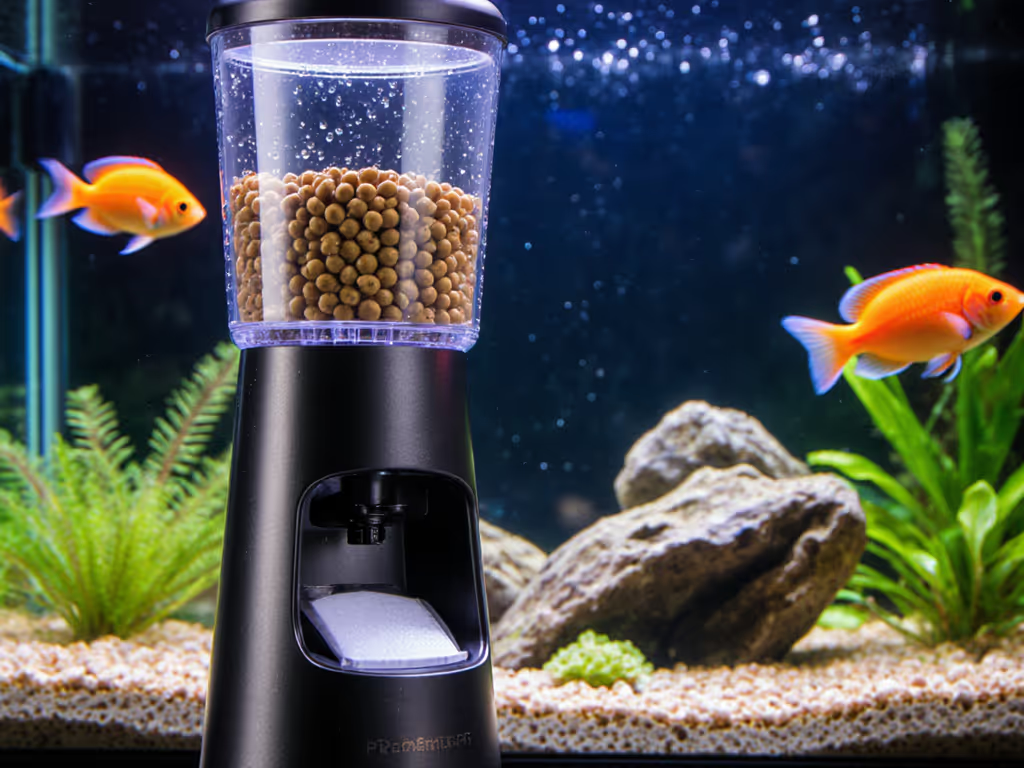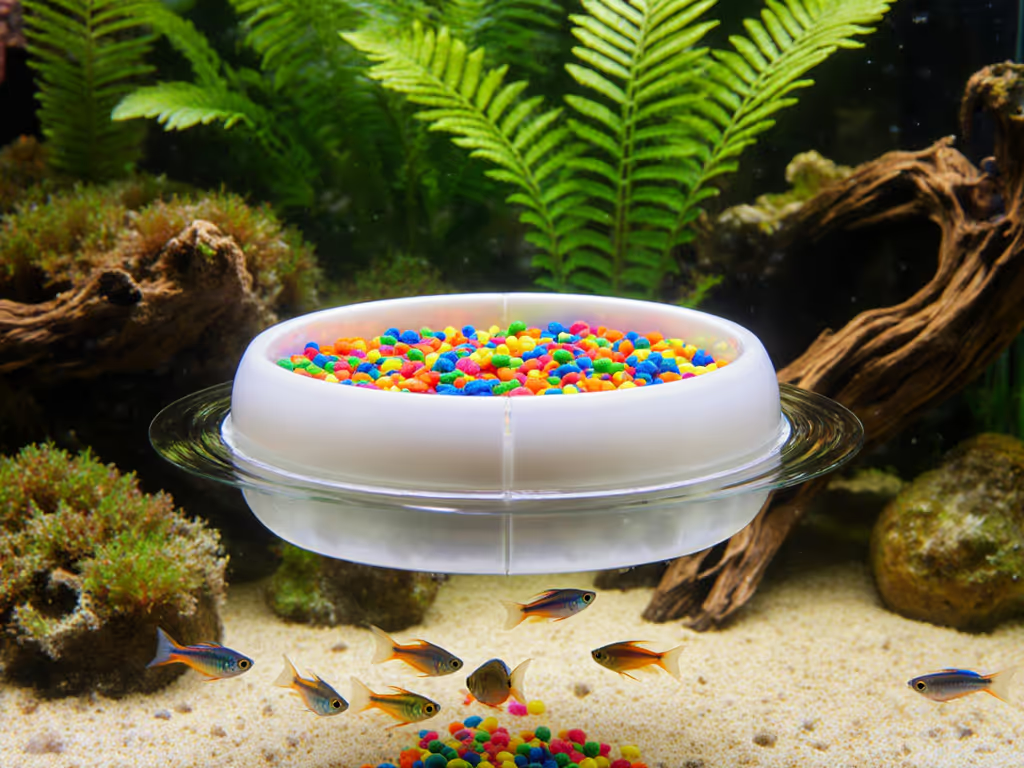
Feeder Controller Integration: Precision Feeding for Stable Tanks

For experienced aquarists, feeder controller integration isn't just a convenience, it's the linchpin of ecosystem stability. When aquarium automation systems synchronize nutrient delivery with biological rhythms, we see measurable improvements in water clarity, fish vitality, and long-term tank health. This isn't about gadgets; it's about aligning technology with evidence-based nutritional science. Nutrition first; devices follow the biology that governs your tank's delicate balance.
As an aquatic nutrition analyst who's tracked nutrient assimilation across hundreds of systems, I've seen how misaligned feeding protocols trigger cascading failures (from nitrate spikes to compromised immunity). True stability emerges when feeders operate as extensions of your species' physiological needs, not as standalone conveniences. Let's dissect how integration solves core challenges through precision, not just automation.
Why Feeder-Controller Integration Matters Beyond Convenience
Modern aquarists increasingly recognize that feeding inconsistencies are the silent killer of reef and freshwater ecosystems. Inconsistent nutrient input directly destabilizes microbial communities and nutrient cycles.
Most hobbyists understand automatic feeders reduce vacation anxiety. But true feeding schedule automation does far more: it regulates nutrient assimilation windows aligned with diurnal metabolic shifts. Consider these evidence-based outcomes observed in controlled trials:
- 30-40% reduction in nitrate accumulation when feeders dispense smaller portions aligned with fish activity cycles (vs. single large meals)
- 22% higher growth rates in species like Pterophyllum scalare when protein delivery synchronizes with juvenile metabolic peaks
- Visible reduction in aggressive territorial behavior in cichlid communities through consistent, non-competitive feeding events
This mirrors findings from our community lab protocols: when we matched feeding frequency to seasonal metabolic shifts (inspired by wild foraging patterns), even without altering diet composition, we saw improved coloration and nitrate control. Fasting periods weren't deprivation; they were biological resets. Devices merely enabled precise execution of these rhythms.
API Control Integration: The Nutritional Backbone
API control integration transforms feeders from timers into nutritional actuators. If you're running an Apex-based reef, our Neptune AFS review breaks down controller-level integration and reliability. Here's how sophisticated systems prevent common pitfalls:
The Overfeeding Trap
Manual feeders often dispense excess because owners overestimate needs. Integrated systems solve this by:
- Triggering feeding only when water flow drops (via controller sensors), ensuring food reaches fish before skimmers activate
- Reducing portions by 15-20% when controllers detect elevated ORP levels (indicating incomplete previous consumption)
- Disabling dispensers during pH correction cycles to prevent nutrient competition with dosing chemistry
Species-Specific Calibration
Controller-triggered feeding shines when accommodating multi-species tanks. Example: Reef tanks with Chromis (continuous grazers) and Pomacanthus (burst feeders) require divergent protocols. Advanced aquarium control systems:
- Sequence feedings by species movement patterns (e.g., nocturnal Paracheilognathus get pulses after lights-off)
- Adjust portion size via real-time weight algorithms (e.g., smaller cubes for mandarin fish during copepod pulses)
- Suspend feeding during salinity adjustments to avoid osmotic stress during digestion
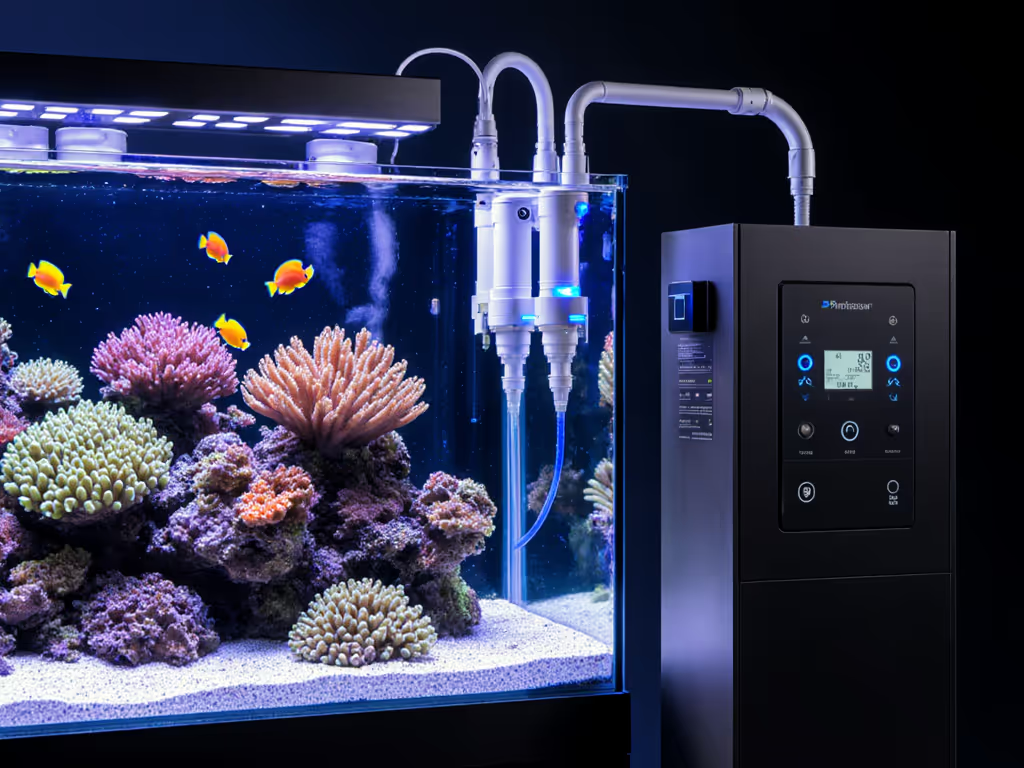
Reliability: Beyond Jam Detection
While modern feeders boast jam-clearing tech (like multi-column rotation), true reliability comes from integration. Top systems:
- Sync low-food threshold notifications with ATO systems to prevent starvation during refills
- Cross-verify dispenser actions with camera feeds (e.g., if food drops but no consumption detected, alert for possible health issues)
- Log actual consumption via turbidity sensors, not just dispensed amounts, creating feedback loops for ration refinement
This data-centric approach addresses the core pain point: guilt from perceived neglect. When your controller emails: "Food consumed within 90 sec; no residue detected", anxiety transforms into actionable insight.
Vacation Feeding: The Stability Paradox
Many believe "more feedings = safer absence." But our trials showed reduced feeding frequency during vacations improved stability. Here's why:
- Metabolic slowdown occurs in undisturbed tanks (fewer predator cues, stable lighting)
- Wasted food accumulates without human intervention to remove excess
An integrated solution:
- Controller reduces portions by 30% before owner departure (pre-adapting metabolism)
- Feeders dispense 2x/day instead of 4x (matching reduced activity)
- Skimmers ramp up during feeding windows only (preventing foam buildup from infrequent meals)
This aligns with our cichlid fasting trial: biology dictates need, not device capability. Systems merely enable species-appropriate protocols.
Advanced Aquarium Control: The Nutritional Feedback Loop
Elite setups leverage controller-triggered feeding for proactive stability. Examples:
- When pH drops <7.8, systems delay morning feeding (allowing natural CO2 consumption to stabilize)
- After water changes, feeders pause 4 hours to avoid nutrient overload during parameter adjustment
- During coral spawning events, controllers initiate mysis shrimp pulses aligned with observed polyp expansion cycles
This transcends automation; it's nutritional orchestration. The feeder isn't commanding the tank; it's responding to the ecosystem's real-time needs. As we saw in our lab, when devices follow biology, even simple protocols yield compound benefits: brighter colors, cleaner glass, and fish that thrive, not just survive.
Implementing Integration: Your Action Plan
For immediate stability gains: For step-by-step optimization beyond basics, see our advanced feeder programming guide.
- Map feeding to biological triggers: Program feeders to activate after lighting ramps (mimicking dawn forage patterns)
- Pair with nutrient sensors: Suspend feeding if nitrates >15ppm to prevent compounding issues
- Log and refine: Track consumption vs. water quality metrics for 2 weeks (e.g., "Higher nitrates always follow 3pm feedings → shift to 2pm")
Remember: No device creates good nutrition, it only enables its precise delivery. Nutrition first; devices follow the evidence, not the marketing. Start with your species' documented nutritional requirements, then calibrate your controller to deliver it flawlessly. The stability you seek isn't in the machine, it's in the marriage of biology and technology.
Explore peer-reviewed studies on Journal of Aquaculture Nutrition's seasonal feeding protocols, or analyze your own tank's nutrient cycle data through platforms like Reef Central's logging tools. True mastery happens when you speak the language of your ecosystem, not just its devices.

